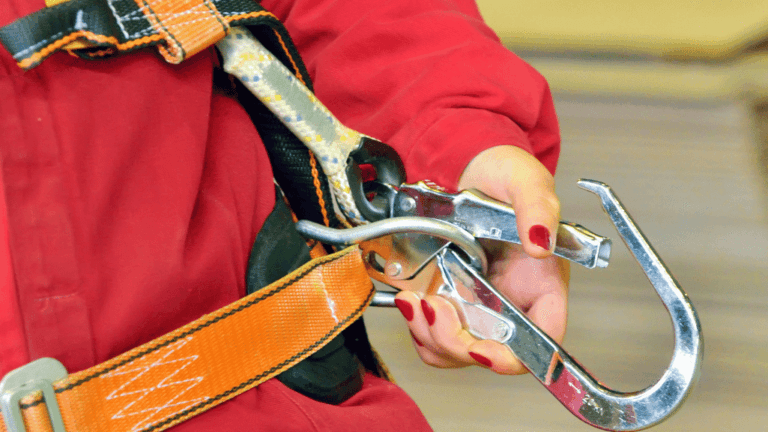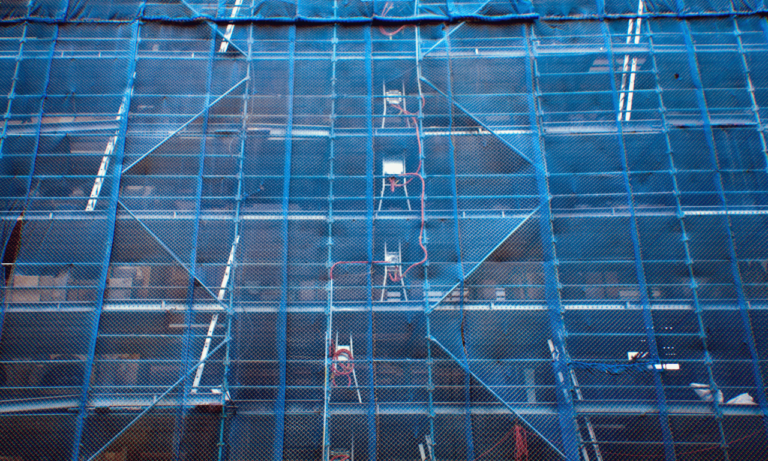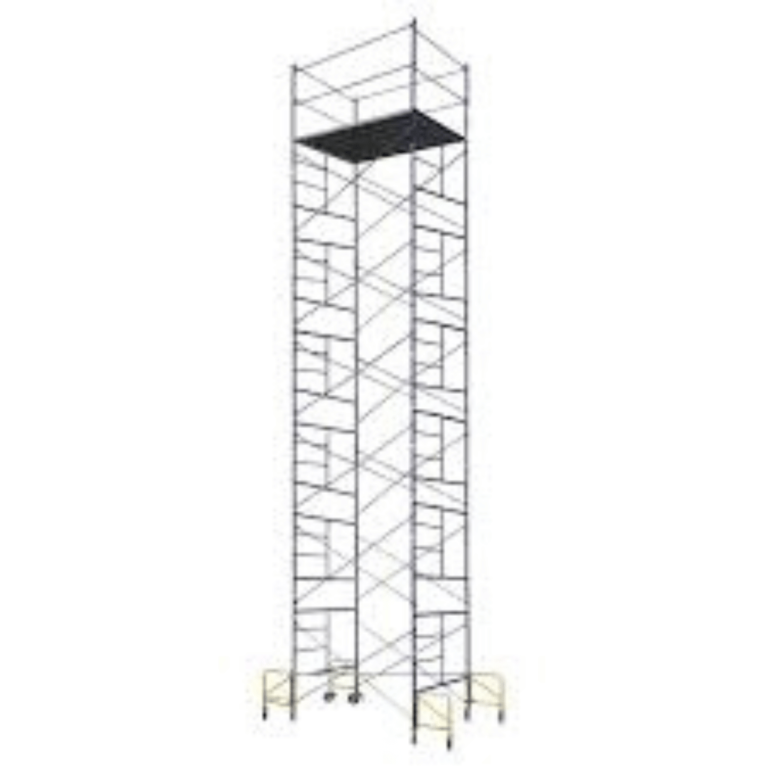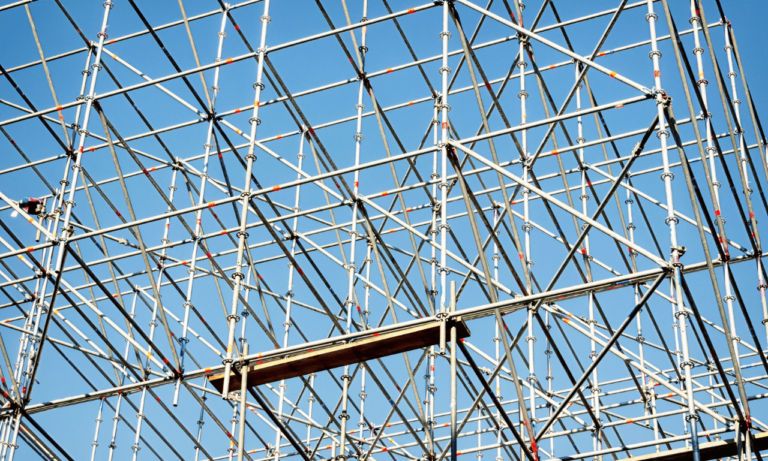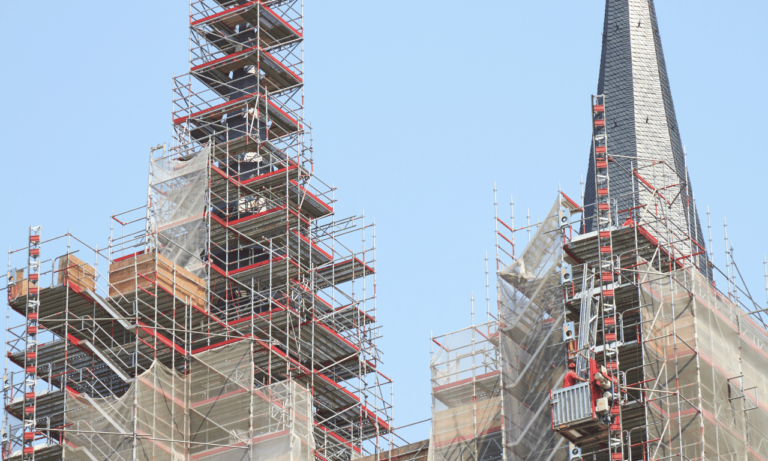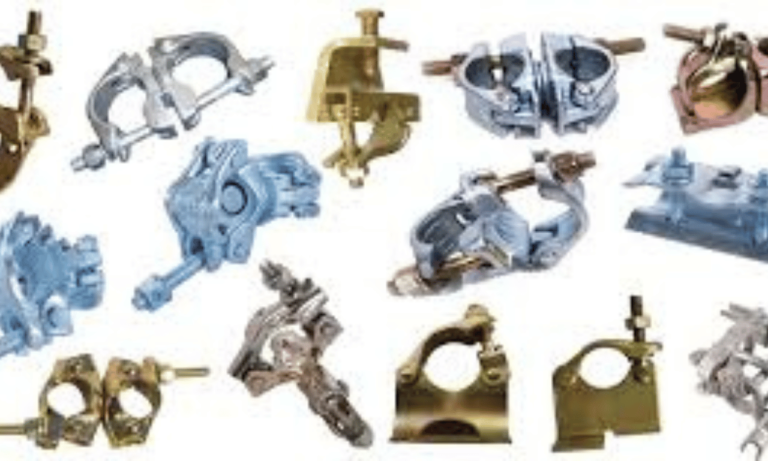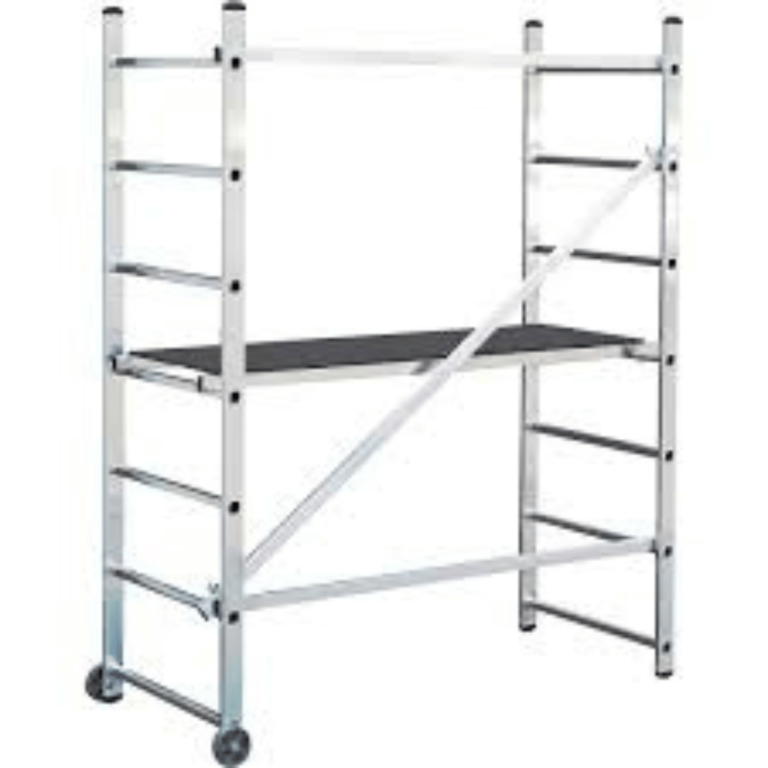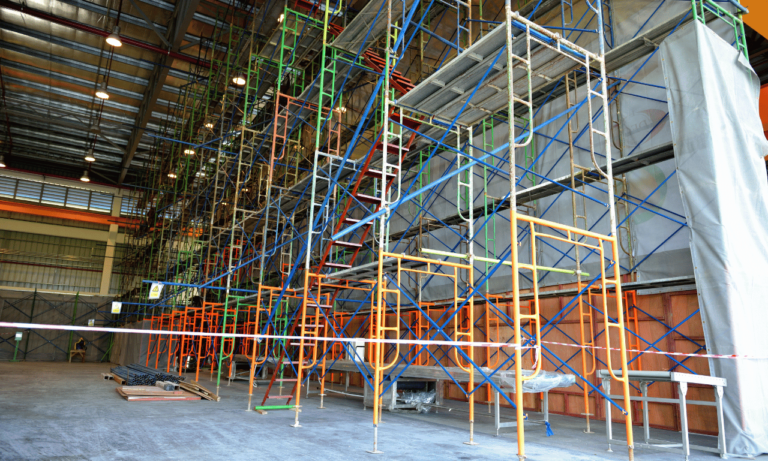Phone:
(+65)8319-0742
Formwork is key in shaping concrete structures. It acts as a mold, giving concrete its final shape. The choice of materials and systems affects costs, timelines, and quality. This article looks at different types of formwork for concrete structures, their features, and uses.
Concrete forming methods have changed, offering builders many options. From traditional timber to modern plastic and fabric systems, each has its benefits. Knowing these options helps in picking the right formwork for a project.
Formwork systems use different materials, each for specific projects. Steel and aluminum are durable for big projects. Timber and plywood are versatile and cost-effective. Plastic and fabric offer new solutions for unique designs.
Key Takeaways
- Formwork construction accounts for 20-25% of structural costs
- Steel formwork lasts longer than timber formwork
- Tunnel formwork speeds up high-rise construction
- Plastic formwork suits small, repetitive projects
- Aluminum formwork is lighter than steel
- Fabric formwork allows for creative concrete shapes
- Stay-in-place formwork offers added structural benefits
Introduction to Formwork in Concrete Construction
Formwork is key in concrete construction. It acts as a mold that shapes and supports concrete until it sets. Good formwork design is vital for the structure’s strength and how it looks.
Formwork’s role in building projects is big, making up 20-25% of the structural costs. To save money, builders use reusable parts and smart designs.
When installing formwork, several things must be thought about:
- Load-bearing capacity
- Dimensional stability
- Leak-proof joints
- Ease of removal
The type of formwork material depends on the building’s design and the project’s needs. Builders often choose from timber, steel, aluminum, and plastic.
| Formwork Material | Advantages | Considerations |
|---|---|---|
| Timber | Cost-effective, versatile | Limited reusability |
| Steel | Durable, high strength | Heavy, higher initial cost |
| Aluminum | Lightweight, corrosion-resistant | Higher cost than timber |
| Plastic | Lightweight, easy to handle | Limited load-bearing capacity |
The American Concrete Institute (ACI) has detailed guidelines for formwork. The ACI PRC-347-14(21) Guide to Formwork for Concrete is a great resource for professionals.
Key Considerations for Formwork Systems
Formwork design and planning are key in concrete construction projects. It’s important to think about several factors for success and safety.
Load-Bearing Capacity and Structural Integrity
The formwork system needs to be strong enough to hold the weight of wet concrete. It must also handle various forces during construction. Steel and aluminum are top choices because they can bear a lot of weight.
Leak-Proof Joints and Dimensional Stability
How strong the joints are in the formwork is crucial for the final product’s strength and quality. These joints must be leak-proof to prevent concrete from seeping out. The look of the finished concrete also depends on the formwork’s texture.
Removability and Lightweight Materials
It’s important to make projects run smoothly and stay on budget. Using lightweight materials like aluminum or plastic helps with this. These materials are easy to move around. They’re great for projects like building houses and city buildings.
| Formwork Type | Material | Application |
|---|---|---|
| Crane-independent | Aluminum/Plastic | Housing, Municipal |
| Crane-dependent | Steel | Commercial, Infrastructure |
| Single-sided | Various | Reconstruction |
| Circular | Specialized | Curved Structures |
Thinking about these factors helps contractors improve their concrete forming techniques. This ensures their projects are successful.
Timber and Plywood Formwork
Timber formwork has been a key part of building for centuries. It’s flexible and easy to use, making it great for small to medium projects. Plywood formwork is better for bigger or more complex projects.
Advantages and Limitations of Timber Formwork
Timber formwork is known for being cost-effective and easy to work with. It’s great for shaping and keeps the inside of the structure warm. For small projects, it’s often less expensive than metal options.
But, timber has its downsides. It can warp and needs regular care to stay effective.
Plywood as a Complementary Material
Plywood formwork is a good choice when timber doesn’t cut it. It’s ideal for big or complex projects because it can be customized and reused. Plywood panels are strong, flexible, and easy to manage, making them a top pick among wooden formwork materials.
Timber and plywood both bring special benefits to building. Timber is best for small projects, while plywood is better for large ones. The choice between these wooden formwork materials depends on the project’s size, complexity, and budget.
| Formwork Type | Cost-Effectiveness | Workability | Durability | Best For |
|---|---|---|---|---|
| Timber | High | Excellent | Low | Small projects |
| Plywood | Moderate | Good | Moderate | Large, complex projects |
The choice between timber and plywood depends on what the project needs. Both materials have their own strengths, making them essential in today’s construction.
Metallic Formwork: Steel and Aluminum
Metallic formwork systems are now widely used in building projects because they last a long time and can be reused. Steel and aluminum formwork are especially good for builders working on many projects at once.
Durability and Longevity of Steel Formwork
Steel formwork is a top choice for many building projects. It’s strong and doesn’t bend, perfect for big projects like dams, bridges, and tanks. Steel forms give concrete a smooth surface and help prevent air pockets. They’re also waterproof and can be used over and over, saving money over time.
Lightweight Benefits of Aluminum Formwork
Aluminum formwork is similar to steel but is much lighter. This makes it easier to move around on-site. It’s often used for homes and large building projects. Using aluminum can cut construction time by up to two-thirds compared to other materials.
| Feature | Steel Formwork | Aluminum Formwork |
|---|---|---|
| Weight | Heavy | Lightweight |
| Strength | High | Medium |
| Best for | Large projects | Residential units |
| Reusability | High | High |
Both steel and aluminum formwork are easy to set up and take down. Steel is stronger, while aluminum is easier to handle. The best choice between these options depends on the project’s needs and the site conditions.
Types of Formwork for Concrete Structures
Formwork is key in making concrete structures. There are many types, each for different construction needs. Reinforced, precast, and slipform work are top choices today.
Wall, beam, foundation, and column formwork support specific parts of a structure. Tunnel formwork is great for building repetitive parts in homes, making construction quicker and quality better.
Slipform and jumpform are best for building tall structures. For homes, permanent formwork like stay-in-place and insulated concrete forms (ICF) add insulation and strength.
| Formwork Type | Application | Key Benefit |
|---|---|---|
| Reinforced concrete formwork | General construction | Versatility |
| Precast concrete formwork | Off-site manufacturing | Quality control |
| Slipform formwork | Tall structures | Continuous pouring |
| Tunnel formwork | Repetitive elements | Speed of construction |
| ICF | Residential buildings | Energy efficiency |
Choosing the right formwork affects costs, with 20-25% of structural costs going to formwork. Timber is popular for its easy use and availability. Engineered systems are quicker and cheaper because they can be reused.
Plastic and Fabric Formwork Systems
Modern construction needs new solutions. Plastic and fabric formwork are stepping up. They bring efficiency and design flexibility to concrete work.
Modular and Interlocking Plastic Formwork
Plastic formwork is great for small projects with lots of repetition. It uses lightweight, modular panels that snap together easily. These panels are also easy to clean and can be reused, saving money over time.
Plastic formwork may not be as versatile as timber, but it’s durable and easy to use. Contractors love it for projects with the same elements repeated over and over.
Flexibility and Design Freedom with Fabric Formwork
Fabric formwork, or flexible formwork, is changing how we design buildings. It uses strong fabric sheets to make unique shapes and details. This method is perfect for complex, organic designs that were hard or impossible before.
One big plus of fabric formwork is it uses less concrete. This means it’s cheaper and better for the environment. For buildings with odd shapes, fabric formwork is unmatched in flexibility and design freedom.
| Formwork Type | Best For | Key Advantage |
|---|---|---|
| Plastic Formwork | Small to medium projects | Easy assembly and cleaning |
| Fabric Formwork | Complex architectural designs | Flexibility and material efficiency |
Plastic and fabric formwork are changing the construction world. They offer new ways to build that are efficient and creative. As architects and builders look for better solutions, these new formwork options will become more important.
Stay-in-Place and Permanent Insulated Formwork
Stay-in-place formwork has changed the way we build with concrete. It stays put after the concrete hardens, adding strength and support. Insulating concrete formwork (ICF) is a type of permanent formwork that benefits both builders and homeowners greatly.
ICFs are now used in many types of buildings, not just homes. They started with single-family houses but now also cover apartments, hotels, and shops. These forms are usually 16 inches tall, 48 inches long, and have cavities of 6 or 8 inches.
ICF is very good at saving energy. Buildings with ICF can cut heating and cooling costs by up to 20%. ICF walls have an R-value of about 20, making them more airtight than traditional buildings.
ICF technology started in the late 1960s. Werner Gregori, a Canadian contractor, filed the first patent for foam concrete forms in 1966. Since then, ICF has become more popular and is now accepted in building codes around the world.
| Feature | ICF Performance |
|---|---|
| Energy Savings | Up to 20% for heating and cooling |
| R-value | Approximately 20 |
| Air Tightness | 10-30% better than frame construction |
| CO2 Savings | 110 tons over 100-year service life |
| Sound Transmission Coefficient | 46-72 (vs. 36 for standard insulation) |
ICFs do more than save energy. They also reduce noise, fight fires, and improve air quality. ICF walls block sound better than regular insulation, have four- to six-hour fire resistance, and control humidity for a better living space.
Choosing the Right Formwork Material for Your Project
Choosing the right formwork material is key to a project’s success. It depends on the project size, complexity, and site conditions. Let’s look at what to consider when picking the best formwork material.
Project Requirements and Site Conditions
For smaller projects, timber formwork is a good choice because it’s affordable and versatile. It can be made on-site easily. Steel formwork is better for big projects because it’s reusable and strong.
Aluminum formwork is a lighter option, making it easier to handle and set up. Plastic formwork is great for tough environments and is cost-effective. It’s perfect for bridges and arches.
For smooth concrete finishes, use formwork ply with a phenolic paper coating. It’s great for pillars, columns, beams, slabs, and walls.
Balancing Cost, Efficiency, and Quality
Cost is important, but so is efficiency and quality over time. Steel and aluminum formwork systems are strong and last long. They save on labor costs and speed up projects, making them great for big and repetitive projects.
Sustainable formwork options are becoming more popular. For example, Screedmaster Chairs are made from 100% recycled plastic. They help control concrete finishes and are good for the environment. Systems like Sacraform™ and Stremaform® also offer stay-in-place options that improve thermal performance and look.
When choosing architectural formwork, think about safety too. Good formwork design keeps structures stable during and after construction. Working with experienced designers ensures the project meets safety standards and laws, leading to a successful outcome.
Conclusion
The concrete construction industry has seen big changes in formwork innovations. These changes have changed how buildings are made. From old timber to new engineered systems, formwork has gotten better and projects have improved. Flexible formwork systems are now leading the way, bringing precision and flexibility to complex designs.
Steel and aluminum formwork are now popular for their long life and ability to be reused. Steel is strong, while aluminum is light but just as solid. Plastic formwork is great for projects needing detailed shapes, cutting down on labor and adding flexibility.
As the industry grows, new formwork solutions like climbing and slipform systems are making building vertical and round structures easier. Using 2D and 3D software in design has made formwork more precise and efficient. These advances make building safer, faster, and more eco-friendly in the concrete industry.






